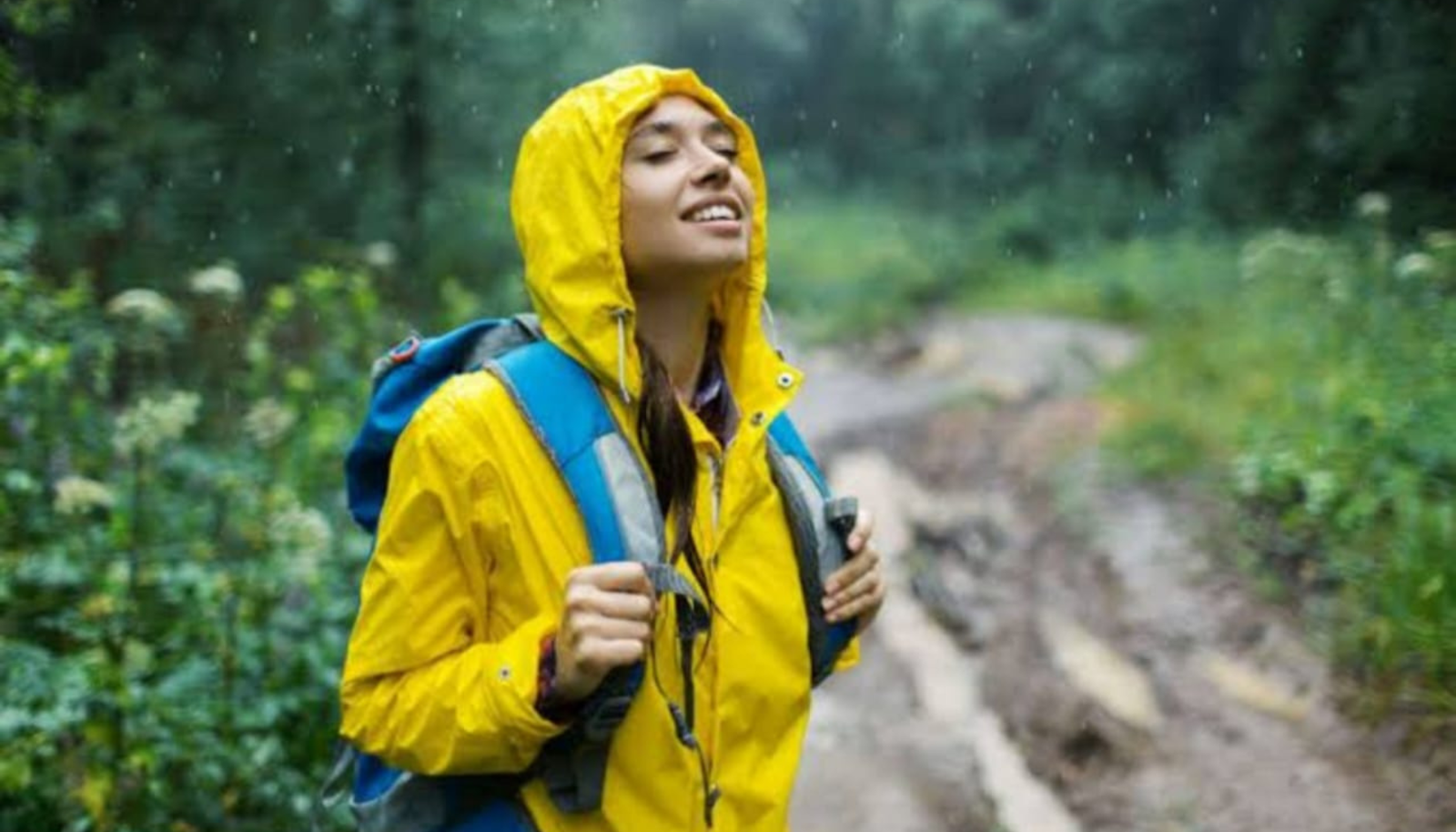The typical monsoon season in India, starting from June till September, turns the parched landscape into a lush, vibrant paradise. While the rains bring a refreshing respite from the scorching summer heat, they also necessitate a different approach to packing.
A monsoon trip in India can be an unforgettable experience, but only if you’re adequately prepared. Here are five essentials to carry for a monsoon trip in India, ensuring your journey is comfortable, safe, and enjoyable.
How to Plan a Monsoon Trip in India
A monsoon trip in India can be an unforgettable experience, but only if you’re adequately prepared. Here are five essentials to carry for a monsoon trip in India, ensuring your journey is comfortable, safe, and enjoyable.
1. Waterproof Gear: Your First Line of Defense
This is, without a doubt, the most crucial item on your packing list. India’s monsoon rains can range from light drizzles to torrential downpours. And if caught unprepared, they can quickly dampen your spirits (and your clothes). So, it is always better to carry the following waterproof equipment:

- Rain Jacket and Trousers: A good quality, lightweight, and breathable waterproof hooded jacket is a must. Look for options with sealed seams to prevent water seepage. Complement this with waterproof trousers, especially if you plan on trekking or spending significant time outdoors. Ponchos are a more affordable and compact alternative for lighter showers or as an emergency cover.
- Waterproof Backpack Cover: Your regular backpack, no matter how sturdy, is unlikely to withstand a proper monsoon shower. If you want to protect your electronics, documents, and clothes from getting soaked, invest in a waterproof backpack cover. Many backpacks come with integrated covers, but if yours doesn’t, purchase a separate one that fits snugly.
- Waterproof Footwear: This is where many travelers make a mistake. During showers, your regular sneakers or sandals get soggy and uncomfortable, leading to blisters and fungal infections. To avoid this, opt for waterproof sandals (like Crocs or Teva-style sandals), gumboots (especially if you’re venturing into rural or waterlogged areas), or waterproof hiking shoes. Look for shoes made of quick-drying materials that have a good grip to prevent slips on wet surfaces. Avoid leather or canvas shoes as they take ages to dry.
- Waterproof Pouches/Bags: For protecting your phone wallet, passport and important documents, you must carry small waterproof pouches. Also use different sizes of dry bags to pack your clothes and keep them separate from anything wet.
2. Quick-Drying and Lightweight Clothing: Embrace Synthetics

Being comfortable and light weight cotton is the most preferred fabric to wear. But during rains, this material becomes your enemy as it absorbs water, becomes heavy, takes ages to dry, and can lead to a musty smell.
- Synthetic Fabrics: You must pack quick-drying synthetic material clothing for your monsoon trip. These often include clothes made of nylon, polyester, or blends. These fabrics wick away moisture, dry rapidly, and are less prone to wrinkling.
- Light Layers: Even though it’s the monsoon, the humidity can make it feel warm. Pack light, breathable layers that you can easily add or remove. Think t-shirts, long-sleeved shirts, and light trousers. Full-sleeved options can also offer some protection from mosquitoes.
- Spare Clothes: Always carry an extra set of clothes, especially if you’re prone to getting wet. Nothing is worse than having to wear damp clothes. Pack them in a waterproof bag to keep them dry even if your main backpack gets wet.
- Swimwear: If your itinerary includes destinations with waterfalls or opportunities for a dip, pack swimwear made of quick-drying fabric.
3. Insect Repellent and Basic First-Aid: Health is Wealth
You see a surge in the population of mosquitoes and other insects during the monsoon season. This is because of the increased humidity and stagnant water, which raises the risk of diseases like dengue and malaria. To avoid the danger of mosquito bites you must carry the following objects.

- High-Quality Insect Repellent: Carry a repellent containing DEET, picaridin, or oil of lemon eucalyptus. Apply it liberally, especially during dawn and dusk. Consider wearing long-sleeved shirts and trousers as an additional layer of protection.
- Mosquito Net: If you will be staying in budget hotels or travelling to a more remote area, a portable mosquito net will be handy to get peace of mind during sleep.
- Basic First-Aid Kit: ensure you carry the basic first aid including antiseptics, bandages, pain relievers, anti-diarrhea medication, medication for cold and flu symptoms, and any personal medications you require. The chances of cuts and scrapes are higher on slippery surfaces, so having wound care essentials is crucial.
- Hand Sanitizer: Limited clean water and soap hinder public hygiene. Hand sanitizer is invaluable for maintaining hygiene, especially before meals.
- Electrolyte Sachets: excessive humidity and sweating leads to the dehydration. Electrolyte sachets can help replenish lost salts and minerals.
Also read: 10 Rainy Season Precautions To Stay Healthy And Enjoy The Rain
4. Power Bank and Torch: Staying Connected and Safe
During heavy storms in the monsoon, power outages are very common. Staying connected and having light can be vital. You must therefore carry the following objects for your monsoon travel.

- High-Capacity Power Bank: Before you leave, make sure you have a fully charged Power Bank having the capacity to charge various devices except your phone. Consider one with a higher mAh rating to last longer.
- Waterproof Torch/Headlamp: A small, powerful torch or headlamp is invaluable to navigate in dark during power cuts or if you go outdoors after sunset. Choose a waterproof or water-resistant model.
- Zip-Lock Bags for Electronics: Your main bag might have a cover to keep your electronics. Still place your phone, camera, and other sensitive electronics inside sturdy zip-lock bags for an extra layer of protection against moisture.
5. Entertainment and Comfort Items: Keeping Spirits High
Don’t let heavy rains or long travel times hinder your monsoon travel fun. If you are cooped up inside due to any unexpected delays, the following gadgets can help you out.

- Books/E-reader: Getting bored when stuck inside because of monsoon downpours! Not any long, if you carry a good book or a fully loaded e-reader.
- Portable Speaker/Headphones: Your long waiting travel time vanishes within seconds when you have portable speakers/ headphones to listen to music, podcasts, or audiobooks.
- Small, Quick-Drying Towel: While packing for your monsoon travel in India, always pack a microfibre towel that is lightweight, absorbent, and dries quickly.
- Snacks: Carry some non-perishable snacks like energy bars, nuts, or biscuits, especially if you’re traveling to remote areas where food options might be limited during heavy rains.
- Thermos Flask: A thermos can keep your tea or coffee warm, a comforting thought on a chilly, rainy day. It can also be used for carrying hot water for instant noodles or soup.
As you can see, a successful Indian monsoon trip is all about smart preparation. By equipping yourself with these must-have things, you’ll be well-prepared to embrace the rains and create unforgettable memories amidst India’s monsoon magic. So, pack wisely, and get ready to experience the subcontinent in its lush, vibrant glory!




